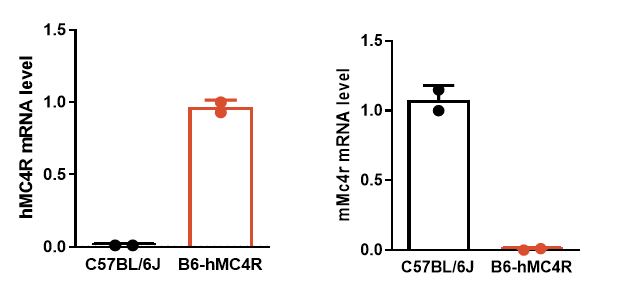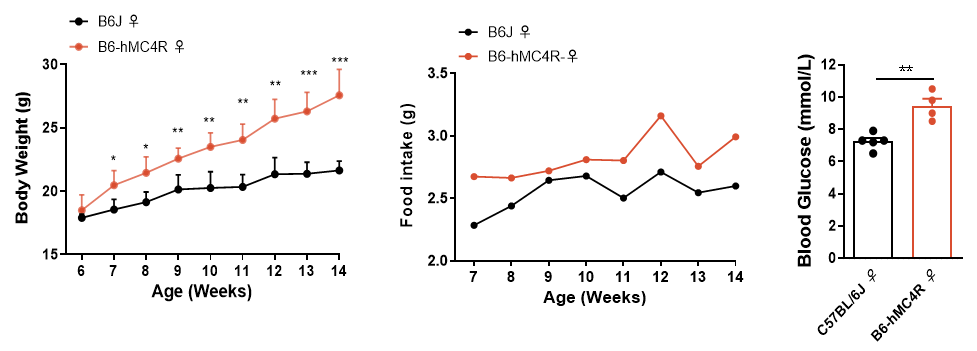In recent years, the global concern for obesity has grown significantly. As our living standards improve and dietary patterns change, the prevalence of obesity has increased, leading to a range of health complications such as type 2 diabetes, fatty liver disease, and cardiovascular disorders. Obesity not only affects physical appearance but also poses a significant threat to overall well-being. To address this complex issue, scientists have been delving into the underlying factors and pathological mechanisms of obesity.
Obesity is primarily caused by an energy imbalance, where calorie intake exceeds expenditure. This imbalance can be attributed to various factors, including sedentary lifestyles, poor dietary choices, and genetic predispositions. It results in the accumulation of excess body fat, which contributes to numerous health complications. To prevent and manage obesity, it is crucial to adopt a well-balanced diet, engage in regular physical activity, and make positive lifestyle changes.
One prominent genetic factor associated with obesity is the melanocortin 4 receptor (MC4R). MC4R is a G-protein-coupled receptor expressed in key areas of the brain, such as the hypothalamus, brainstem, and other regions involved in appetite regulation. Positioned at the end of the leptin-mediated appetite pathway, MC4R plays a crucial role in maintaining energy homeostasis by influencing both energy intake and expenditure. Scientists have discovered a connection between loss-of-function mutations in MC4R and metabolic syndrome, type 2 diabetes, and cardiovascular disease. Conversely, gain-of-function mutations are associated with lower BMI, reduced obesity, and decreased risks of type 2 diabetes and coronary artery disease[1].

Human Gain-of-Function MC4R Variants Show Signaling Bias and Protect against Obesity[1]
With the growing understanding of MC4R's role in weight regulation, researchers have shifted their focus towards developing drugs that target this receptor. Activation of MC4R has been found to reduce body weight and increase energy expenditure in non-human primates, suggesting its potential as a therapeutic strategy for obesity[2]. Numerous pharmaceutical companies and research institutions are now engaged in the development of MC4R agonists and antagonists, aiming to provide effective and safe treatment options for obesity and related conditions.
Currently, there are approximately 20 drugs under development that target MC4R. The majority of these drugs are MC4R agonists designed to treat obesity, while some act as antagonists to target conditions such as anorexia, depression, and anxiety. It is important to note that most of these drugs are still in the preclinical stage and are undergoing rigorous testing to ensure their safety and efficacy. Only one medication, setmelanotide, produced by Rhythm Pharmaceuticals, has received breakthrough therapy designation by the US Food and Drug Administration (FDA) for the treatment of hypothalamic obesity. This recognition underscores the significant potential of MC4R-targeted therapies in combating obesity and related disorders.
To facilitate the development of MC4R agonists, antagonists, and gene therapy for targeted treatment, GemPharmatech utilized gene editing technology to create the B6-hMC4R humanized strain. This strain involves replacing the ATG to TAA sequence of MC4R in C57BL/6JGpt mice with the corresponding human coding sequence. The B6-hMC4R strain expresses human MC4R and exhibits a mild spontaneous obesity phenotype, making it a suitable model for studying obesity and evaluating the efficacy and safety of MC4R-targeted therapies.

mRNA expression level in the brain tissue of B6-hMC4R

Changes of body weight, food intake, and blood glucose levels in B6-hMC4R
Additionally, GemPharmatech has developed an MC4R humanized strain called B6-Chr1YP1. This strain was created by replacing the murine MC4R coding sequence with the corresponding human sequence.
The wild-mouse 750 serves as the background for the B6-Chr1YP1 strain and is a chromosomal substitution strain derived from wild mice obtained in Shanghai's Yangpu district. Compared to inbred strains, the wild mouse 750 exhibits increased genetic diversity and susceptibility to diseases, resembling the characteristics observed in wild mice. Under normal dietary conditions, the wild mouse 750 progressively develops spontaneous obesity starting at 10 weeks of age. As the mice age, the severity of obesity increases, accompanied by notable abnormalities in lipid metabolism that ultimately lead to the development of fatty liver disease. When induced with a Western diet (WD), the onset of non-alcoholic steatohepatitis (NASH) is accelerated in the wild mouse 750. After approximately 18 weeks of WD consumption, the wild mouse 750 displays NASH-like symptoms, including lipid degradation, inflammation, and mild fibrosis, surpassing those observed in C57BL/6JGpt mice over the same period.
Considering the inherent metabolic dysregulation characteristics of the wild mouse 750, it is expected that the wild mouse 750-hMC4R strain will exhibit more pronounced metabolic irregularities, such as increased obesity and disruptions in glucose and lipid metabolism. Therefore, this strain provides a wider range of possibilities for evaluating the effectiveness of therapeutic drugs in preclinical assessments.
GPT’s related model resource
Strain Name | Strain ID | Strain Type |
KI | ||
Wild mouse 750-hMC4R | T059490 | KI |
KO | ||
cKO |
Reference:
1. Luca A Lotta, et al. Human Gain-of-Function MC4R Variants Show Signaling Bias and Protect against Obesity. Cell. 2019 Apr 18;177(3):597-607.e9.
2. Kong Y Chen, et al. RM-493, a melanocortin-4 receptor (MC4R) agonist, increases resting energy expenditure in obese individuals. J Clin Endocrinol Metab. 2015 Apr; 100(4): 1639-45.


